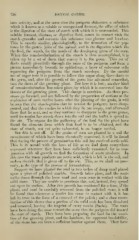Page 746 - My FlipBook
P. 746
756 DENTAL CARIES.
into activity, and at the same time the perigerm elaborates a substance
which is knoNvn as a sokible or unorganized ferment, the office of which
is the digestion of the store of starch with wliich it is surrounded. This
sokible ferment, diastase, or digestive fluid, comes in contact M'ith the
starch-granules and converts this substance into glucose and levulose.
This is exactly similar, physiologically, to the formation of the pep-
tones by the gastric juice of the animal, and is the digestion M'hich fits
the food, the starch, for the needs of the developing germ of the corn.
When this remolecularization of the starch is thus accomplished, it is
taken up by a set of ducts that convey it to the germ. This set of
ducts ramify plentifully through the mass of the perigerm and form a
plexus immediately beneath its epithelium, a layer of columnar cells
separating the perigerm from the starch envelope. By the careful
use of sugar tests it is possible to follow this sugar along these ducts to
the germ, and, after the growth of the germ has advanced somewhat,
into the ducts of the growing plant. But here it is lost ; another kind
of remolecularization has taken place, by which it is converted into the
tissues of the growing plant. This change is nutrition. As these pro-
cesses go forward, and are followed by the preparation of sections at the
expiration of each twelve hours after the planting of the grain, it will
be seen that the starch-grains that lie nearest the perigerm have disap-
peared, and that the meshes in which they lie are empty, and afterward
those that lie next, and so they continue to disappear as the germ grow^s,
until its rootlet has struck down into the soil and the leaflet is spread to
the air. The organs for the gathering of the food for the plant have
found the elements from w'hich that food is to be obtained, and the
store of starch, not yet quite exhausted, is no longer needed.
But this is not all. If the grains of corn are planted in a soil the
constituents of which have been chemically examined, it will be found
that during the process of germination this soil has received acetic acid.
This is in accord with the laws of life as we find them everywhere
expressed wherever they have been sufficiently examined, for in con-
junction with all growth we find the formation of wast-e products. In
this case the waste products are acetic acid, which is left in the soil, and
carbon dioxide, that is given off to the air. This, as we shall see pres-
ently, is the type of the jjrocess of fermentation.
Suppose we have planted the seed in two inches of damp sand placed
upon a piece of polished marble. Growth takes place, and the roots
strike down through the loose sand and soon come in contact with the
solid stone. They are unable to penetrate this, and, instead, they spread
out upon its surface. After this growth has continued for a time, if the
plants and sand be carefully removed from the polished si one, it Avill
be found tliat wherever a rootlet has come in contact with it, it has
left its trace in the form of a removal of the polish ; and a close exam-
ination of this shows that a portion of the solid rock has been dissolved
and removed, leaving the imprint of every rootlet (Sachs). The roots
have been doing the same toward the stone that the perigerm did toward
the store of starch. They have been preparing the food for the nutri-
tion of the growing plant, and the liardness, the apparent insolubility,
of the stone has not been a sufficient barrier against them. They have


